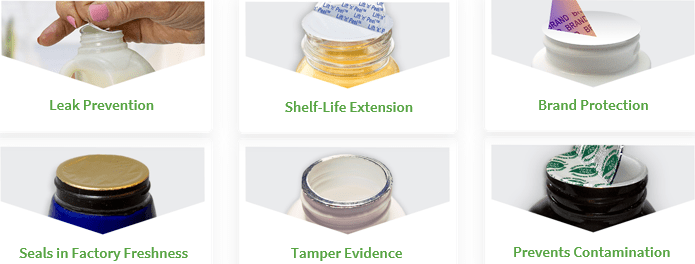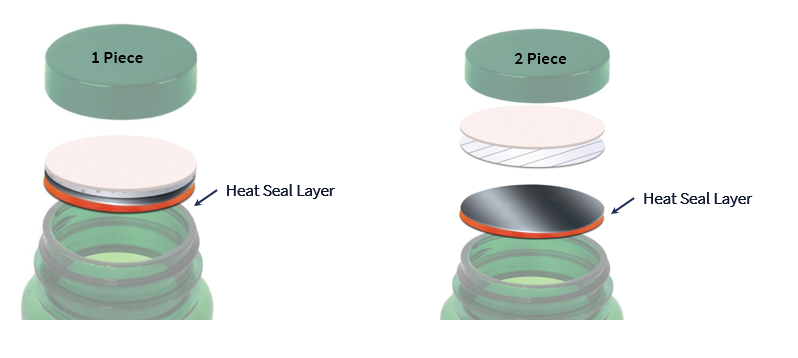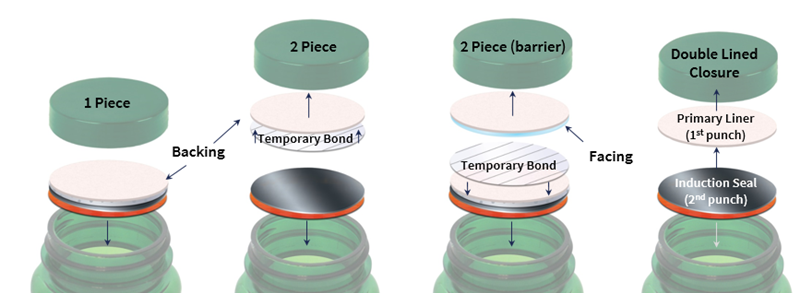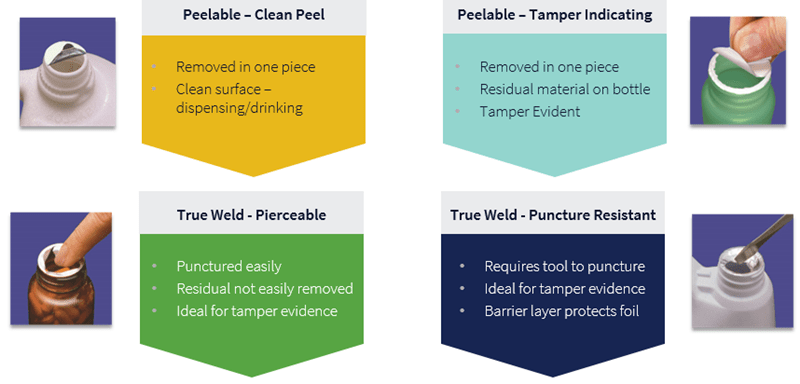Induction Liners 101
Choosing a liner can be a confusing process, so Selig Group and Kaufman Container are here to help. We will be providing an overview of induction liners that will include what induction liners are primarily used for and some of the benefits. Feel free to watch our Induction Liners video.
*All this information was provided to you by Selig Group in partnership with Kaufman Container. All images are proprietary of Selig Group and are not be shared or repurposed. To learn more about induction liners, you visit their website.*

Induction Liners were originally used to prevent liquid leaks but can also help in the following areas:
- Shelf-Life Extension
- Tamper-Evidence
- Prevent Contamination
- Sealing in the Factor Freshness
- Brand Protection
Induction Sealing Process
Understanding the induction process is very important when choosing an induction liner. There are 3 big factors to understand: Pressure, Heat & Time. The Pressure between the liner and container land area is controlled by capping equipment. The Heat is what helps soften and melt the heat seal surface of the liner. The Time the foil is exposed to the induction heating process controlled bu the speed of the conveyor.
One Piece or Two Piece Induction Liners
Kaufman Container offers both one piece and two piece induction liners. One piece induction liners hermetically seal the container and fully transfer without a reseal liner left in the closure. Common uses for one piece induction liners include: single serve packages, peanut butter and orange juice.
Two piece induction liners hermetically seal the container with a foil combination and a separating backing that stays in the closure for reseal. The reseal liner helps prevent leaks while reducing oxygen and moisture. Common uses for two piece induction liners include pharmaceutical OTC drugs such as aspirin or ibuprofen and various chemicals.

Seal Selection
The 2nd step after choosing whether the application should be a one piece or two piece liner, is determining what bottle or container the cap is being paired with. It's very important to understand that induction liner heat seal layers are dependent on the container material it needs to bond to. For example, a Polyester (PET) heat seal liner should be matched with a PET bottle resin. A PE based heat seal layer is best matched with a HDPE bottle. There are universal heat seal layers that can be used when multiple bottles are being filled, but Selig's studies have shown that resin specific heat seal layers outperform the universal and offer lower costs. Glass containers and metal containers can also be sealed with induction liners, but we will cover that in a different article.
Backing Selection
Backings are not as critical as the heat seal layer but not any less important to the overall functionality and consumer experience. Induction seal liners almost always incorporate backing regardless if it's a one piece or two piece liner.
- One Piece Liners: Consist of tabbing, foam, board, film and play a larger roll in the consumer perception of the product
- Two Piece Liners: Consist of foam or pulp that is left in the closure for reseal

Know your Ingredients
Another factor to understand before choosing an induction liner are your product's ingredients. Ingredients can be aggressive or inert and will affect your liner in different ways. Inert contents such as some foods, beverages and dry products should work with most induction liners. However, aggressive contents such as chemicals, high acids and pharmaceuticals require an additional barrier layer in the liner.
Removal Characteristics of Induction Liners
One of the most important parts of choosing an induction liner is deciding how you would like a consumer to remove it. Based on Selig's findings, the number one complaint they receive is when consumers have difficulty removing the liner. Although it may protect the product, if it is difficult to remove, the consumer wil lhave a negative experience and will not likely repurchase. The graphic below shows a few different removal options and each is geared towards specific products/markets.

If you would like to work with us on a project, please click the button below.
Contact Us